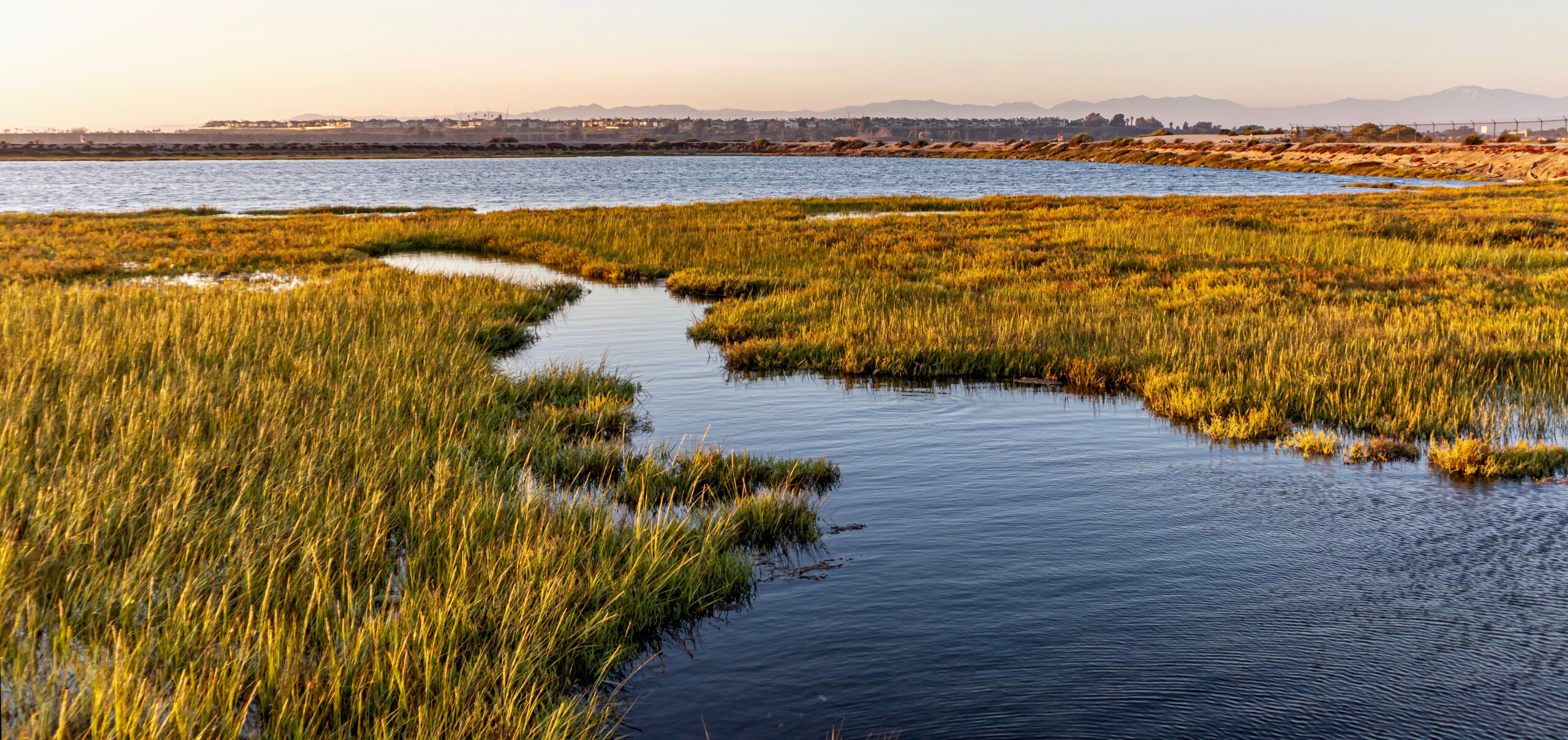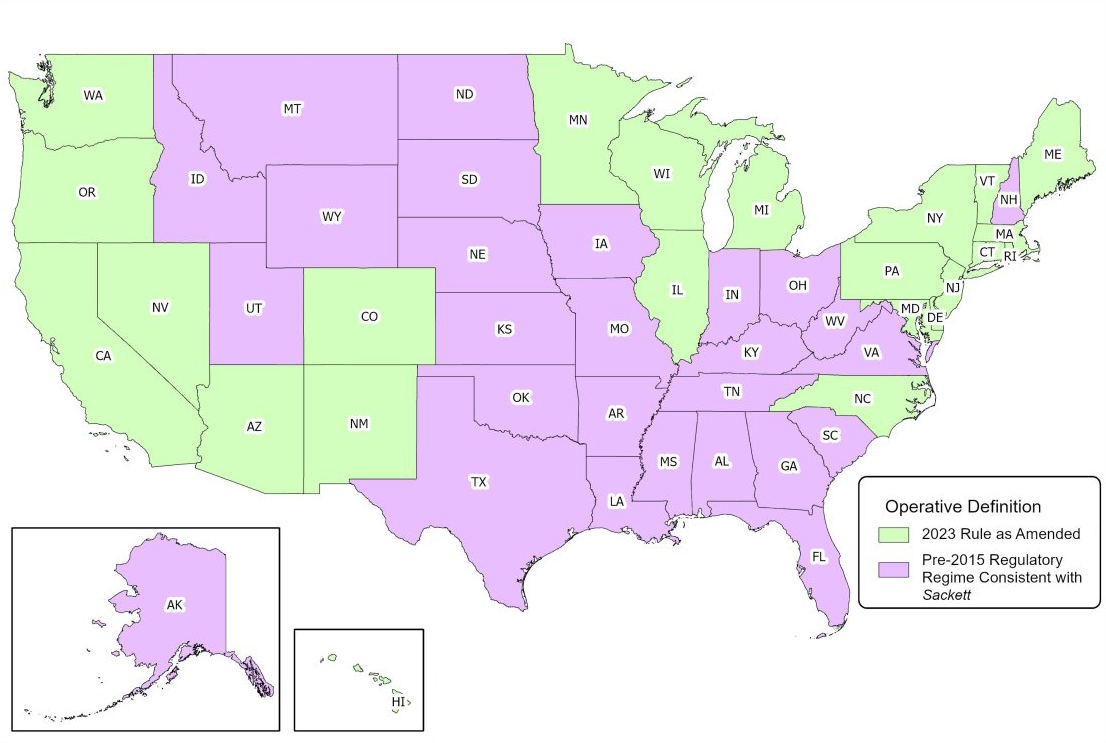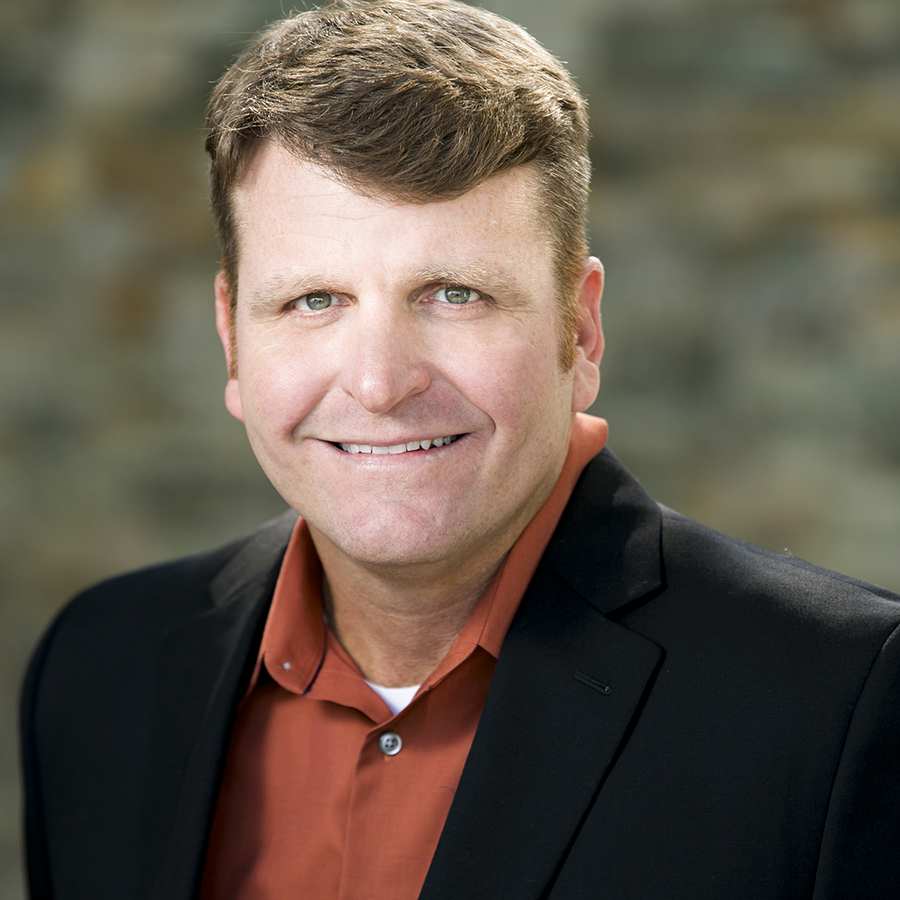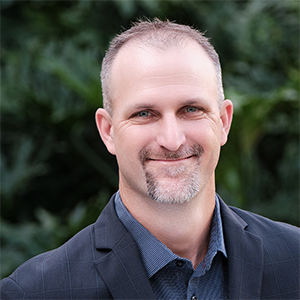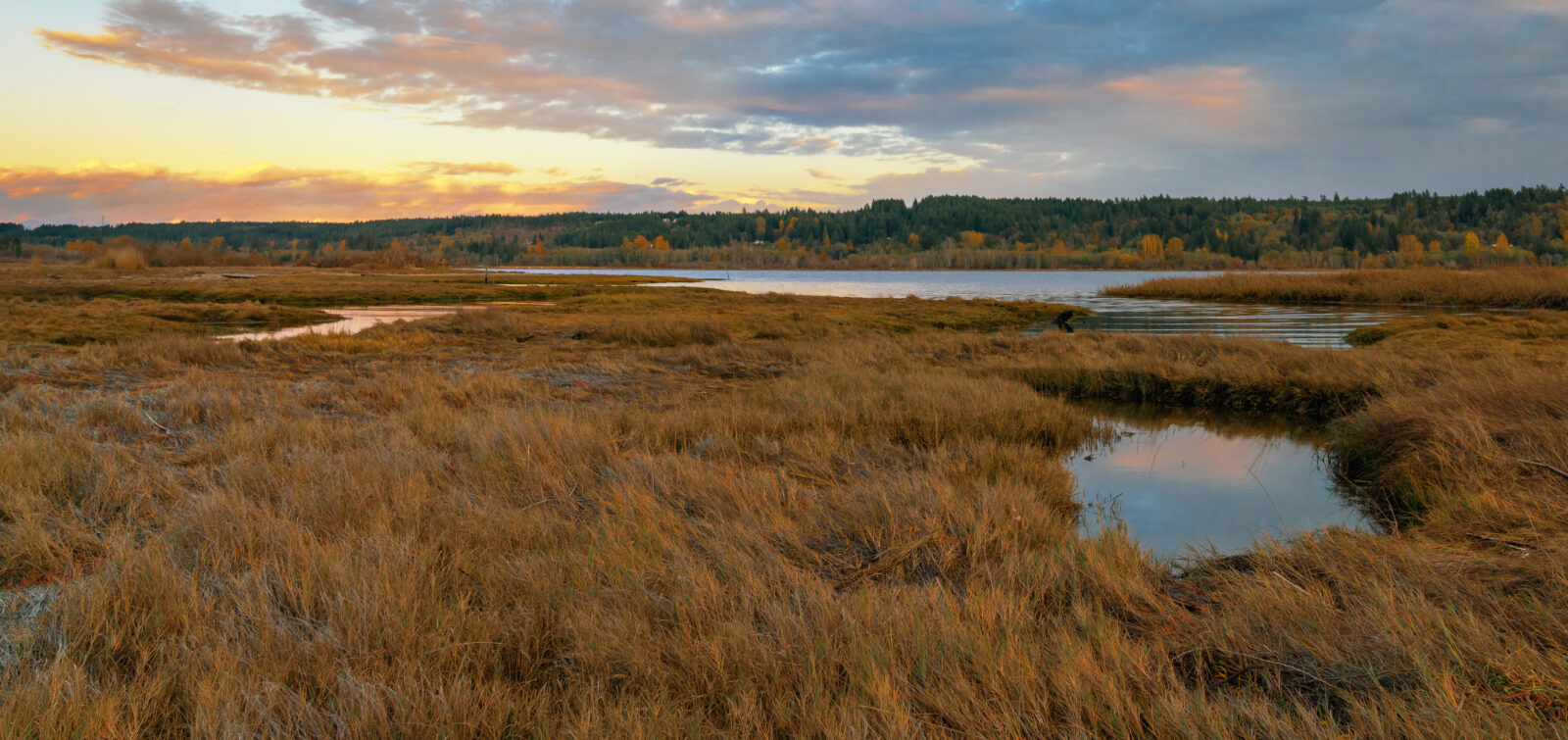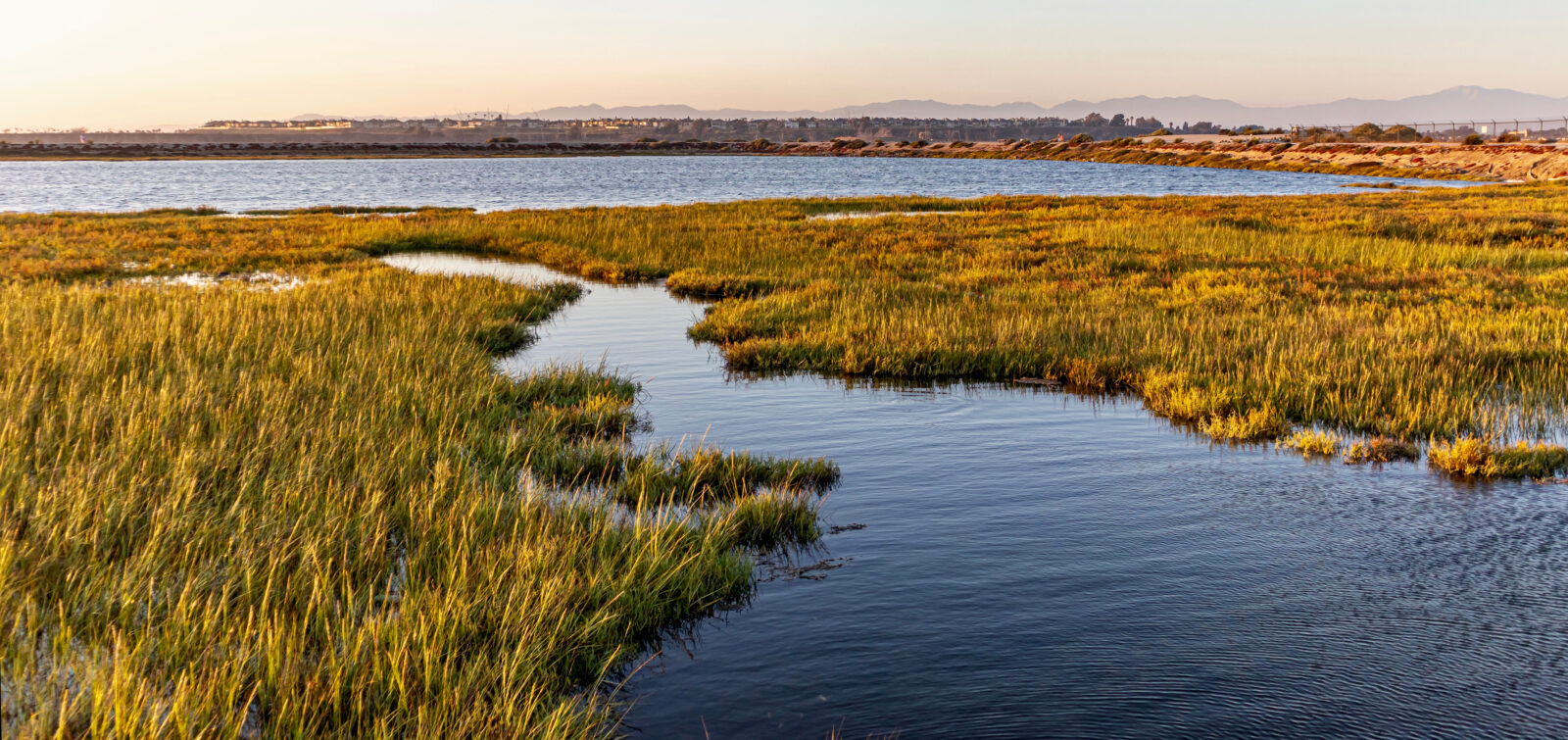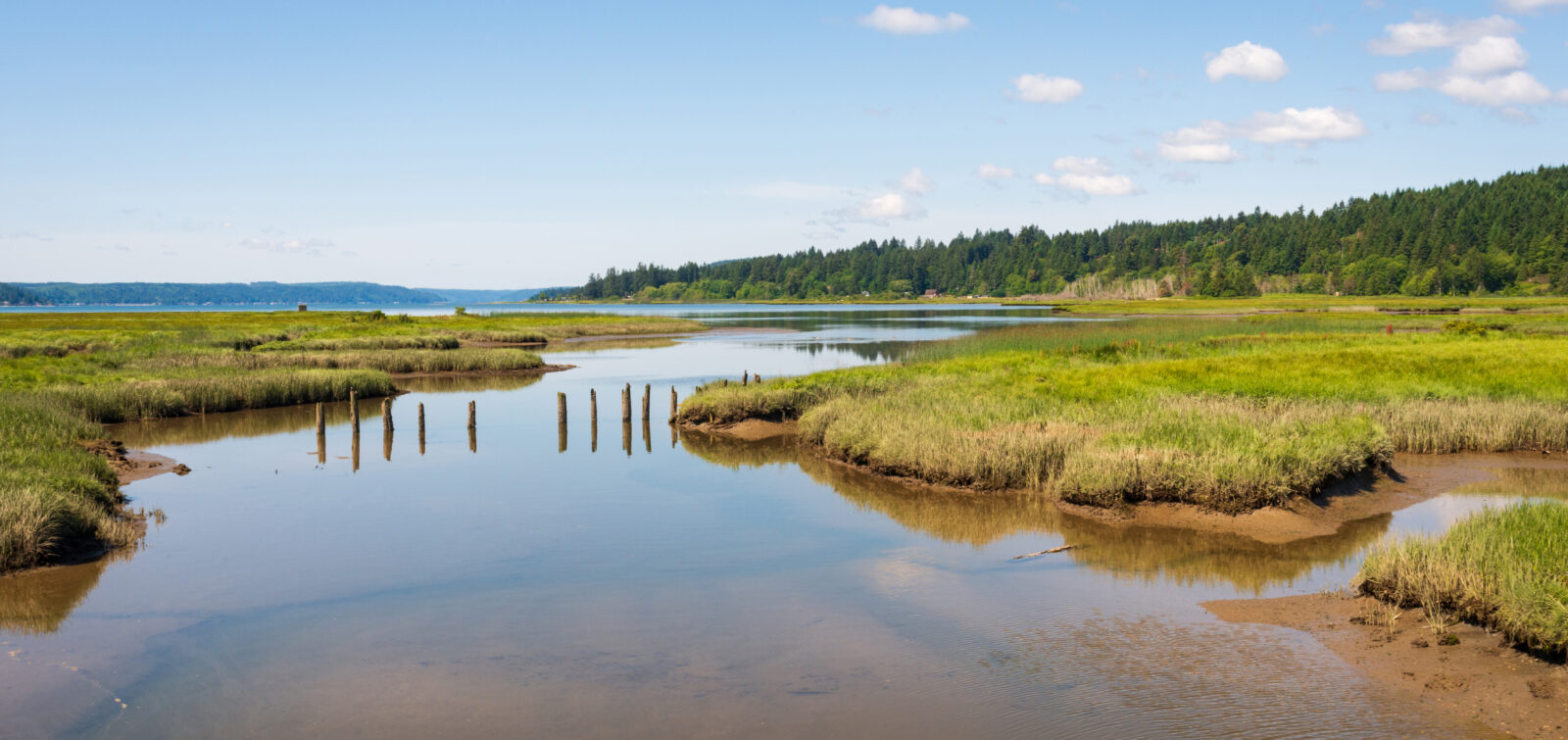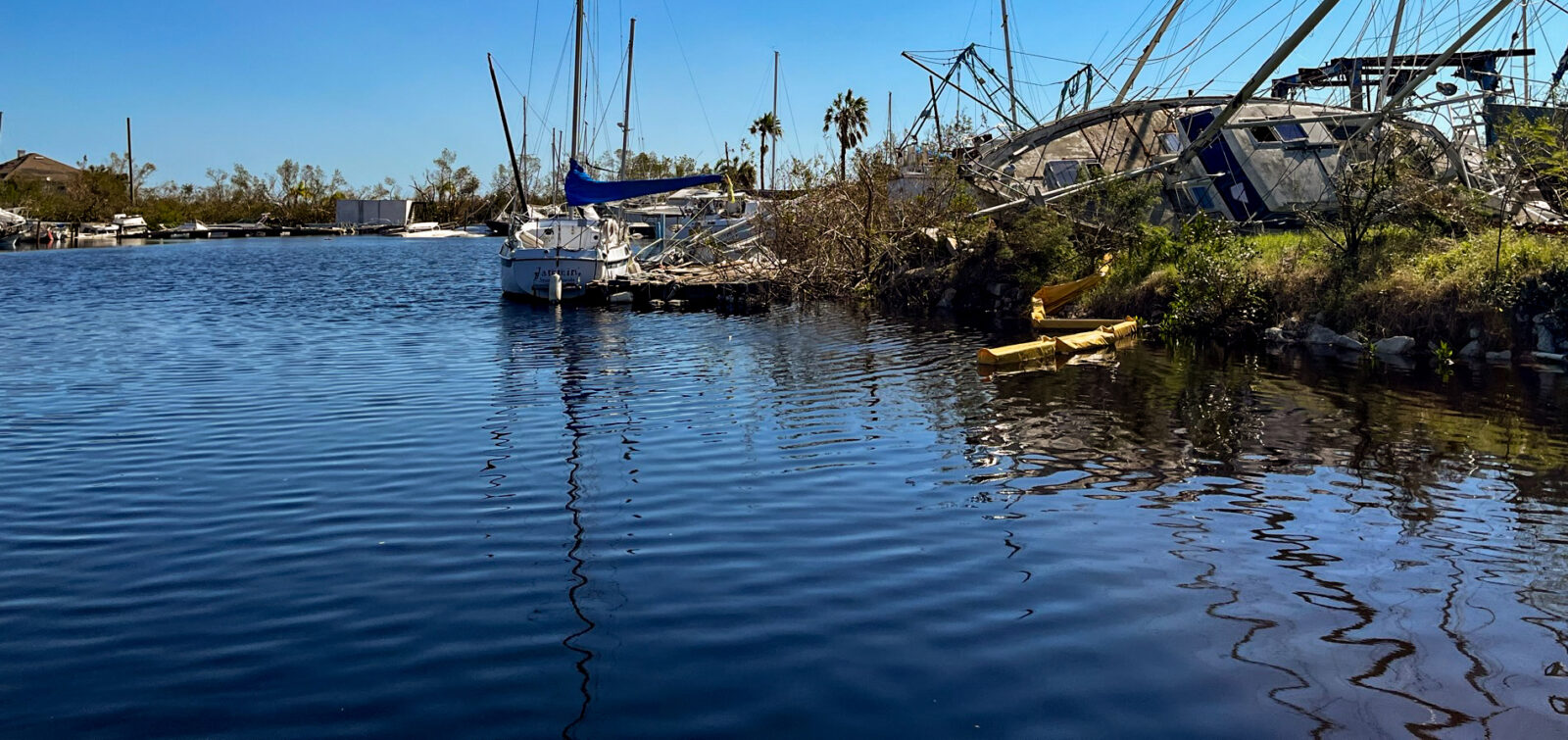The Federal Water Pollution Control Act of 1948 was the first major U.S. law to address water pollution. As amended in 1972, the law became known as the Clean Water Act (CWA). The CWA protects “navigable waters,” defined in the statute as “waters of the United States, including the territorial seas.” However, the CWA does not define the term waters of the United States (WOTUS).
In 1978, the U.S. Environmental Protection Agency (USEPA) and the U.S. Army Corps of Engineers (USACE) developed the first definition for WOTUS. This definition allowed cities, counties, agencies, and the public to determine whether WOTUS occur on properties of interest. If WOTUS are present, projects proposing to impact them must often first obtain a CWA Section 404 permit from the USACE and, potentially, other approvals. Knowing where WOTUS occur on a site is critical for project planning, design, and budgeting—as the need for permits often adds substantial costs and delays.
The final “Revised Definition of ‘Waters of the United States'” rule was published on January 18, 2023, and took effect on March 20, 2023; however, the rule was put on hold in 27 states. On May 25, 2023, the Supreme Court of the United States (Supreme Court) issued a decision on Sackett v. Environmental Protection Agency (Sackett). Sackett dealt with a key question: what is an “adjacent wetland”? The case also had major implications for other types of aquatic features, such as ephemeral streams and rivers.
Given the continuing changes in WOTUS regulation, ESA is providing this update on the latest regulations, tips for permitting and delineation practitioners, and what clients can expect for their upcoming projects.
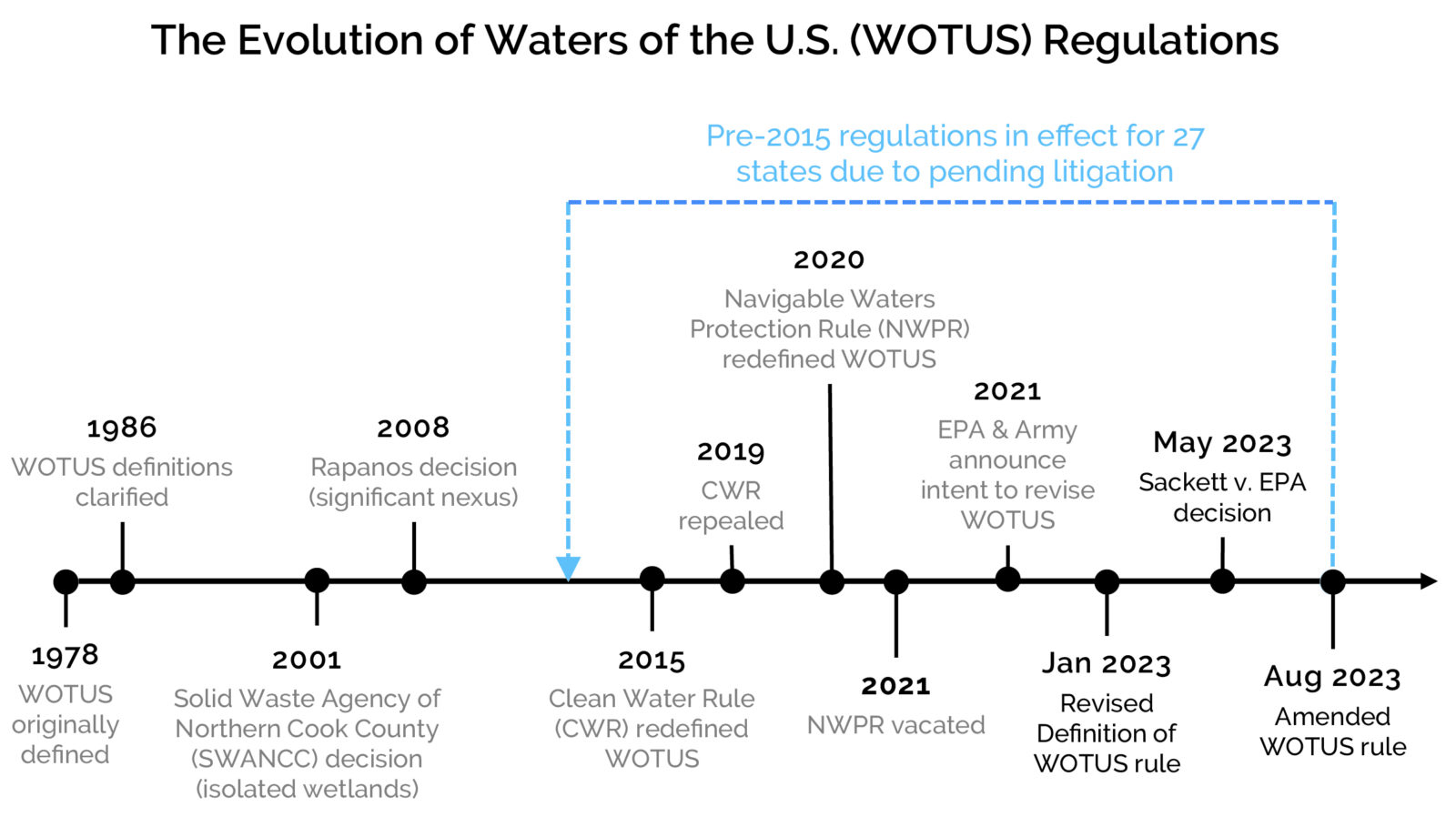
In Sackett, the Supreme Court concluded the term WOTUS encompasses only relatively permanent waters, and not waters that are dry most of the time (i.e., ephemeral waters). The Court also concluded that wetlands are considered WOTUS only when they have a continuous surface connection to other WOTUS so there is no clear demarcation between waters and wetlands. In the words of the Court:
“In sum, we hold that the CWA extends to only those wetlands that are “as a practical matter indistinguishable from waters of the United States. …that the wetland has a continuous surface connection with [the adjacent] water, making it difficult to determine where the ‘water’ ends and the ‘wetland’ begins.”
This new interpretation of wetland adjacency threw out the long-standing interpretation of adjacent wetlands as being “bordering, contiguous, or neighboring.” Finally, the Court concluded that the significant nexus standard—a major component of the January 2023 “Revised Definition of ‘Waters of the United States'” rule—is invalid.
On August 29, 2023, the agencies issued the final rule, “Revised Definition of ‘Waters of the United States’; Conforming,” to reflect the Sackett decision. This latest rule became effective on September 8, 2023. The 2023 Conforming rule is in effect in 23 states, the District of Columbia, and the U.S. Territories. Due to ongoing litigation, 27 other states are implementing the pre-2015 definition of WOTUS.
ESA’s team of regulatory experts has reviewed the Conforming rule. Changes indicated in the Conforming rule are summarized below, as are some impacts practitioners should be aware of.
Relatively permanent waters

- Must connect to “(a)(1)” waters (traditional navigable waters, the territorial seas, or interstate waters).
- Encompass only relatively permanent, standing, or continuously flowing bodies of water, such as streams, oceans, rivers, and lakes.
- Do “not necessarily exclude streams, rivers, or lakes that might dry up in extraordinary circumstances, such as drought” or “seasonal rivers, which contain continuous flow during some months of the year but no flow during dry months.”
Impact: Removes federal protection for ephemeral streams. Intermittent streams may still be considered WOTUS, pending additional agency guidance.
Questions Remain: How permanent is relatively permanent? Would an intermittent stream be considered a relatively permanent water?
Tip: EPA and USACE are developing or modifying existing Streamflow Duration Assessment Methods (SDAM) for use across the U.S., designed to “provide a rapid assessment framework to distinguish between ephemeral, intermittent, and perennial stream flow at the reach scale.”
“Adjacent wetlands”
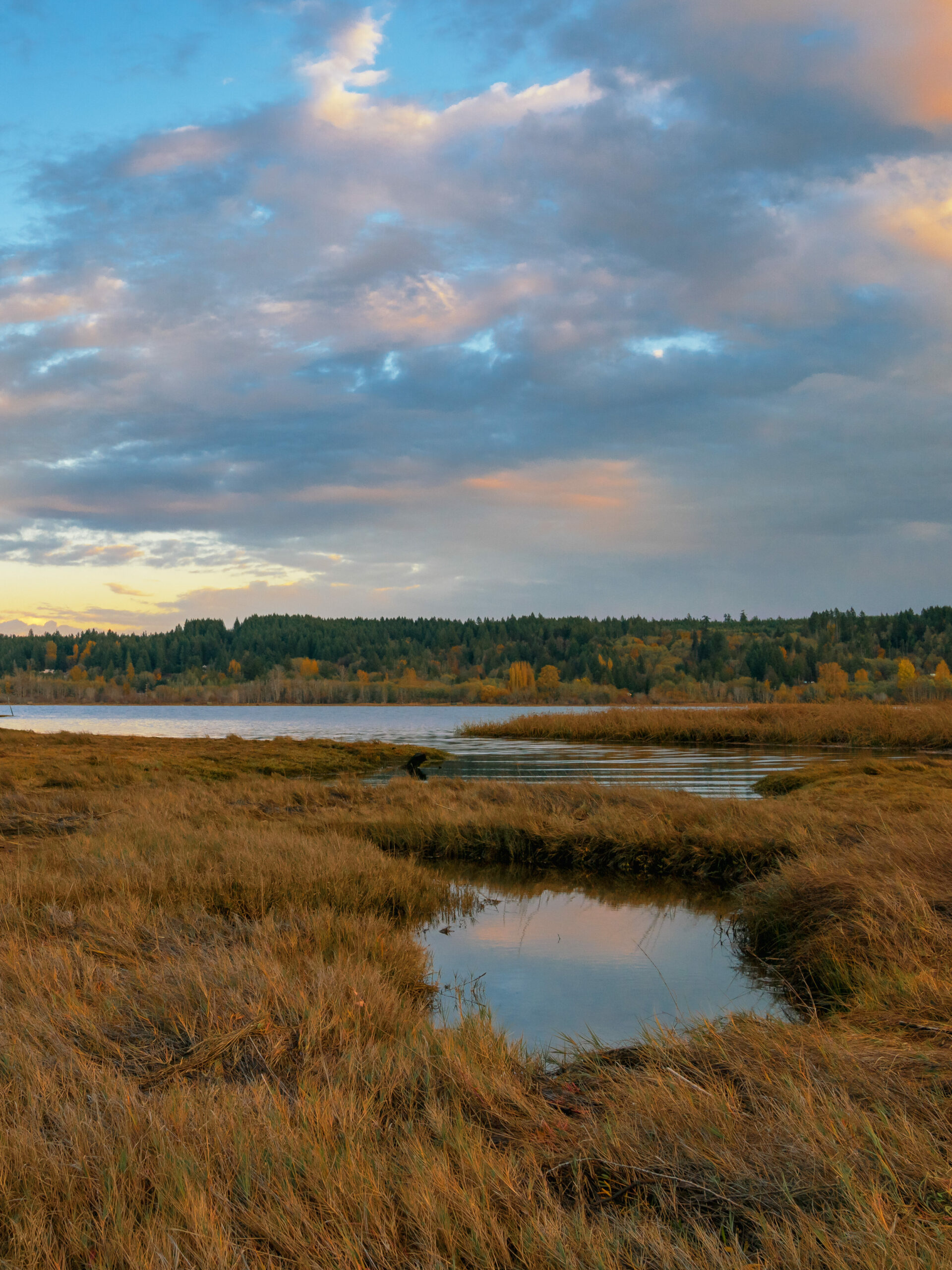
- Wetlands must have a continuous surface connection to WOTUS.
- Wetlands lacking a surface connection to WOTUS, including isolated wetlands (vernal pools, prairie potholes, etc.) are likely no longer considered WOTUS.
- Seasonal wetlands with a continuous surface connection to a relatively permanent water for at least part of the year may be considered WOTUS, pending agency guidance.
Impact: Substantial reduction in wetlands regulated under the Clean Water Act.
Questions Remain: What constitutes a continuous surface connection? Does a surface water conveyance feature, such as a non-jurisdictional ditch, swale, pipe, or culvert qualify as a continuous surface connection?
TIP: Use the National Hydrography Dataset (data viewable here) and USGS StreamStats websites to look for potential continuous surface connections.
Significant Nexus Test
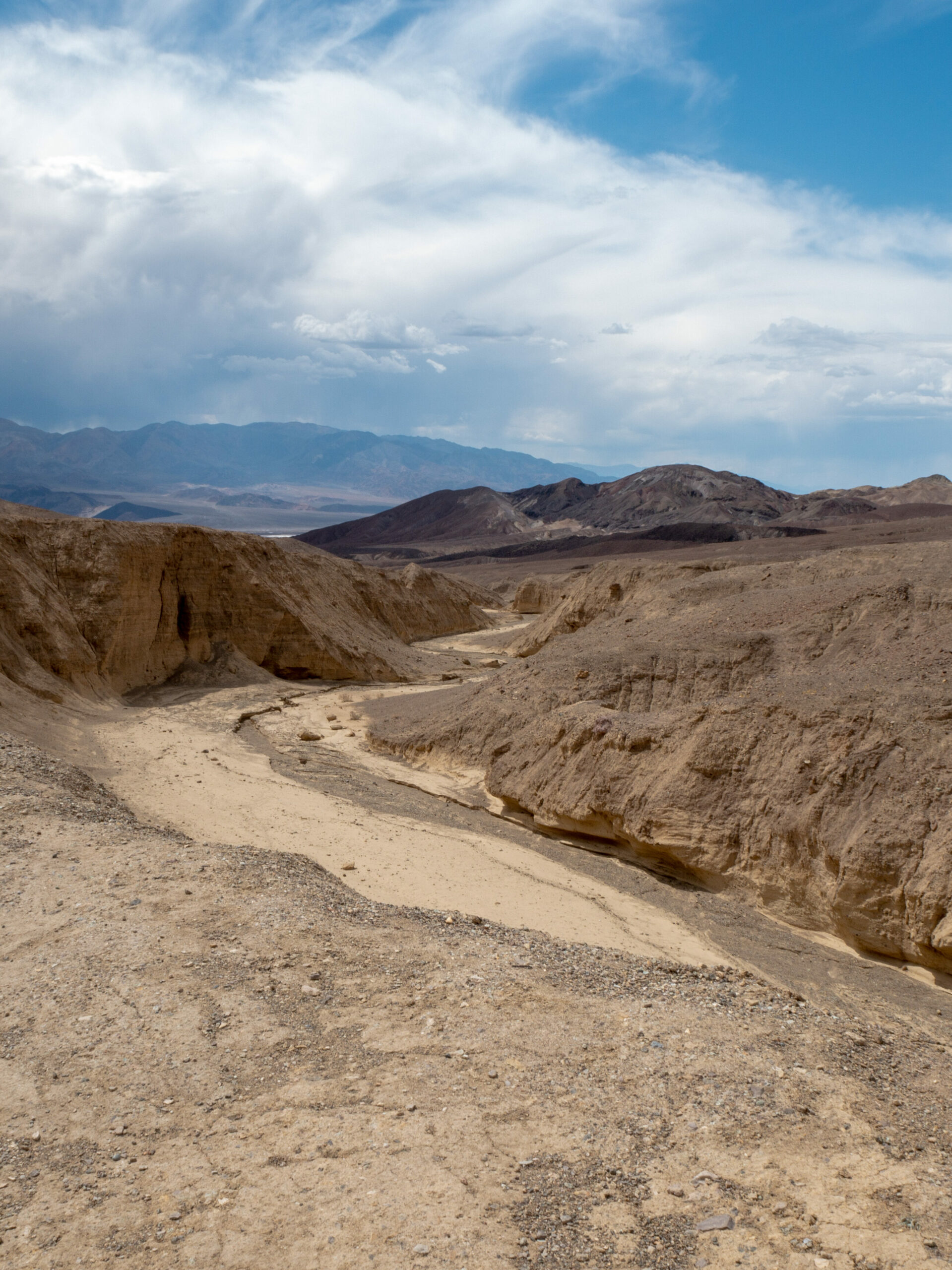
- In a reversal of a 2008 SCOTUS ruling in Rapanos v. United States that required the use of a significant nexus test—used to determine whether an aquatic resource was a WOTUS—the Conforming rule removes the significant nexus test standard.
- Effects on the “chemical, physical, and biological integrity of the Nation’s waters” (Congressional objective for the Clean Water Act) are no longer tied to determination of jurisdiction.
- “Interstate wetlands” has been removed from the defined list of WOTUS categories.
Impact: The significant nexus test is no longer applicable, thereby simplifying determinations of whether aquatic features such as streams, lakes, and wetlands are WOTUS.
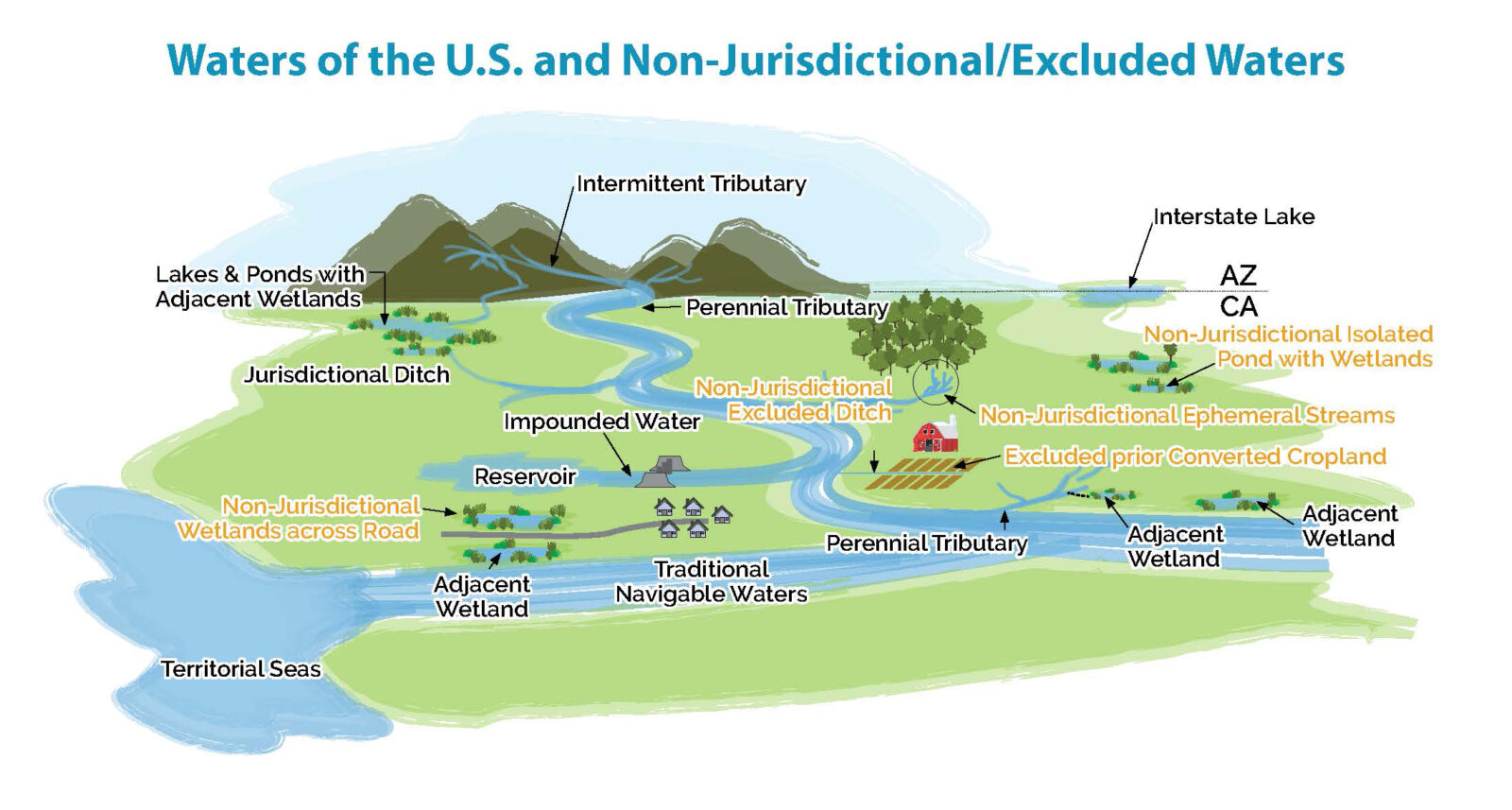
Click on the interactive illustration above, and hover over each water feature to understand new WOTUS regulations.
Your Project: What does this mean for projects that have on-site waters (aquatic resources)?
Aquatic resource delineations that have not been verified by the USACE, as well as projects that have not been issued a permit, may require additional analysis to determine jurisdictional status for the following resources:
- Ephemeral and intermittent tributaries: These may need additional analysis to demonstrate whether the tributary does or does not meet the relative permanent water standard.
- Adjacent wetlands: The simplified definition makes determinations easier, but not all questions are resolved. For example, what does and does not constitute a continuous surface connection? Can the continuous surface connection be seasonal in nature?
The same exclusions as presented in the January 2023 “Revised Definition of ‘Waters of the United States’” rule are still applicable under the Conforming rule (see 33 CFR 328.3(b)(1-8)). Aquatic resources specialists should evaluate all eight exclusions prior to considering jurisdiction under Conforming rule.
It is worth noting that in many states, such as California, Oregon, Washington, and Florida, there are state-level protections for wetlands. State-level environmental compliance and/or compliance with other federal regulations (such as the Endangered Species Act) may become more complicated as a result of the Conforming rule.
ESA’s team of permitting specialists—a blend of former regulators and seasoned consultants—are ready to answer questions about the Conforming rule and can tackle your most complicated environmental permitting challenges.
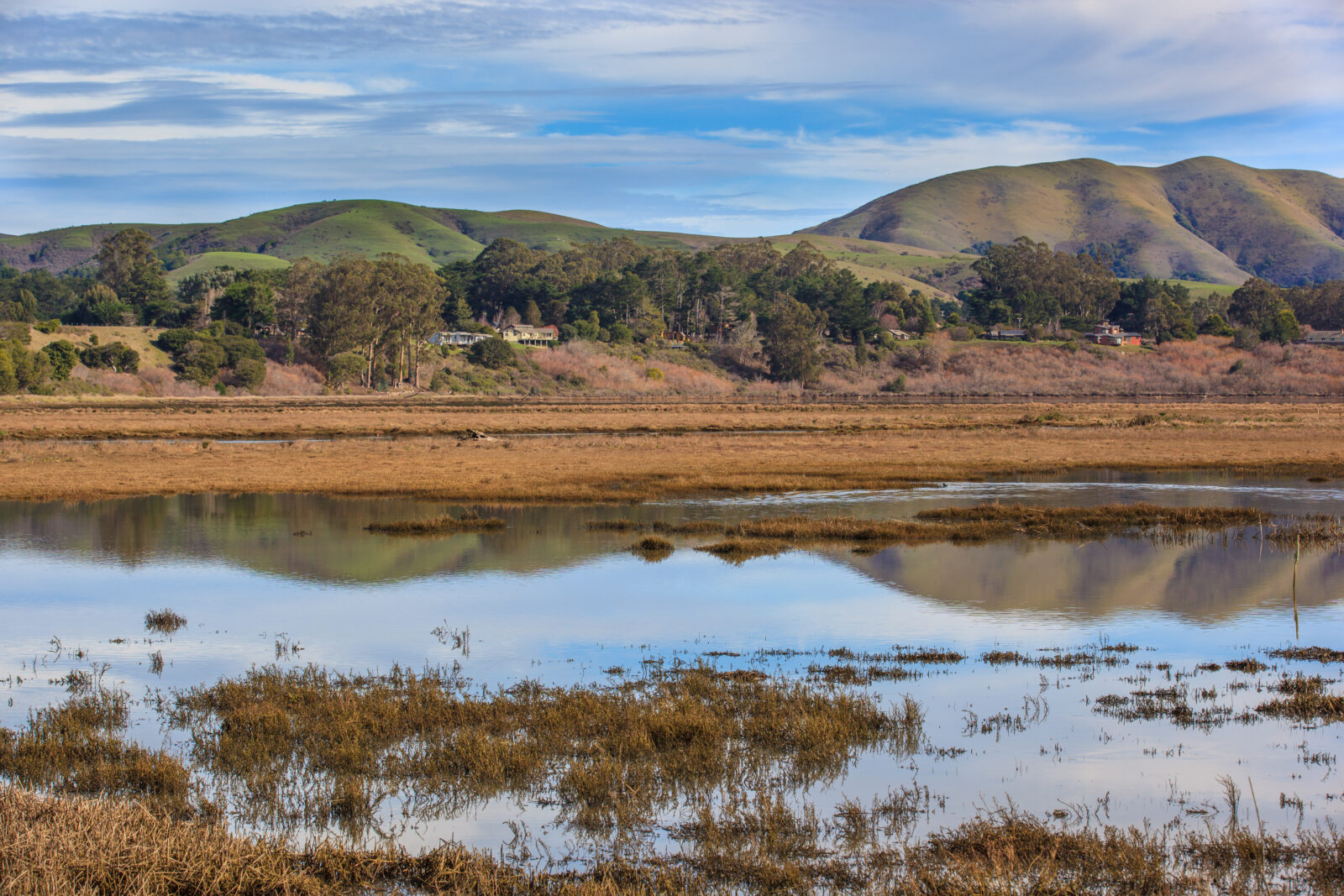
Our staff includes highly qualified permitting specialists, wetland and soil scientists, ecologists, and geospatial analysts. Drawing from our wealth of experience on both sides of the regulatory permitting spectrum, we stand uniquely positioned to not only assist but also expertly guide your project through the ever-changing regulatory maze, ensuring a seamless path to success.
Reach Out to ESA’s Senior Permitting Specialists
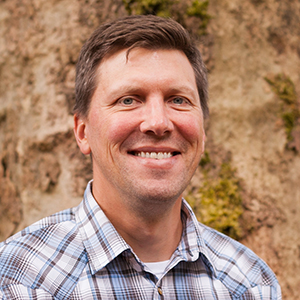
John Vlastelicia
